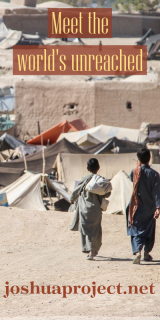Marianna Slocum: The Chol, The Tzeltal and the Bachajon Thank You

Many single womenmissionaries indulge in the fantasy that one day the man of their dreams--a handsome single male missionary--will appear on the scene and romance will follow. And for women translators, isolated in remote regions, the yearning can be allconsuming. For most of them, however, the fantasy is no more than an idle dream. For Marianna Slocum, though, that dream became a reality. After completing college and training at Camp Wycliffe in the summer of 1940, she and her female partner began their translation work among the Chol tribe in Southern Mexico. Stationed nearby, working with the Tzeltal tribe, was Bill Bentley, and in the months after her arrival they fell in love and became engaged. They returned home in the summer of 1941 to prepare for a late August wedding, but it never took place. Six days before their wedding, while Bill was staying in her home, he did not come down to breakfast. Marianna's father found him lifeless in his bed--he had died in the night of congenital heart failure.1 Marianna's dreams were shattered, but in the midst of her sorrow she vowed that she would return to Mexico and finish the work Bill had started. Following his funeral in Topeka, Kansas, she went to Camp Wycliffe and then on to Mexico, alone, but soon to be joined by another single woman. Her days were spent in long tedious hours of language study. It was a hard life, which only the heartiest of women could endure. Several women came to work with her but they did not stay--until Florence Gerdel, a nurse, came in 1947 to help out "temporarily." They began a partnership that would last for decades.2
The work among the Tzeltals was slow. But after seven long years with them, things happened quickly. Her very first convert left the village, scorned by his family and friends, and went to another village where he soon had a congregation of eighty believers. In the years that followed, while she translated the Bible and Florence nursed the sick, "congregations of Christians came into being everywhere." With every step forward, though, there were setbacks. "Enemies of the Gospel set several chapels on fire; some of the Indians were jailed; one was shot and killed for his faith in Christ."3
In 1956, fifteen years after she had come to work among the Tzeltals, the first edition of her justcompleted New Testament was ready to be distributed. It was a big day when the shipment arrived aboard a small aircraft, and the Indians eagerly stood in line to buy copies with their hard-earned pesos. It was a day that also marked a turning point in the ministry of Marianna and Florence. Their work was done. They not only had given the tribe the New Testament, but they had also established churches and had taught people how to read and write and handle their own medical needs. Yet, the two women felt a keen obligation to these people who had opened their hearts to them, and they did not wish to leave without their blessing. So it was that they were commissioned by the Tzeltal Indians to reach out to another needy tribe, the unreached Bachajon people who also lived in the Mexican state of Chiapas.4
The work among the Bachajon people was similar to their work with the Tzeltals and, in 1965, after eight years of toilsome labor, a New Testament was again ready for distribution. On the day that this precious cargo arrived, people from many miles around and from more than forty congregations came to celebrate and to buy their own personal copies. "How much does it cost?" was the oftrepeated question as the Indians stood in line. Seventeen and a half pesos was, of course, the answer to the question they had in mind, but the actual answer could never be given in pesos. Loneliness, illness, unfriendliness, primitive living conditions, and the sacrifice of marriage and family all made up the cost of the Bachajon New Testament. It was a heavy price, but one Marianna gladly paid. And when her work with the Bachajon people was over, she and Florence started all over again in the mountains of Colombia.5
Taken from Guardians of the Great Commission by Ruth A. Tucker. Copyright © 1988 by Ruth A. Tucker. Used by permission of Zondervan Publishing House.







comments